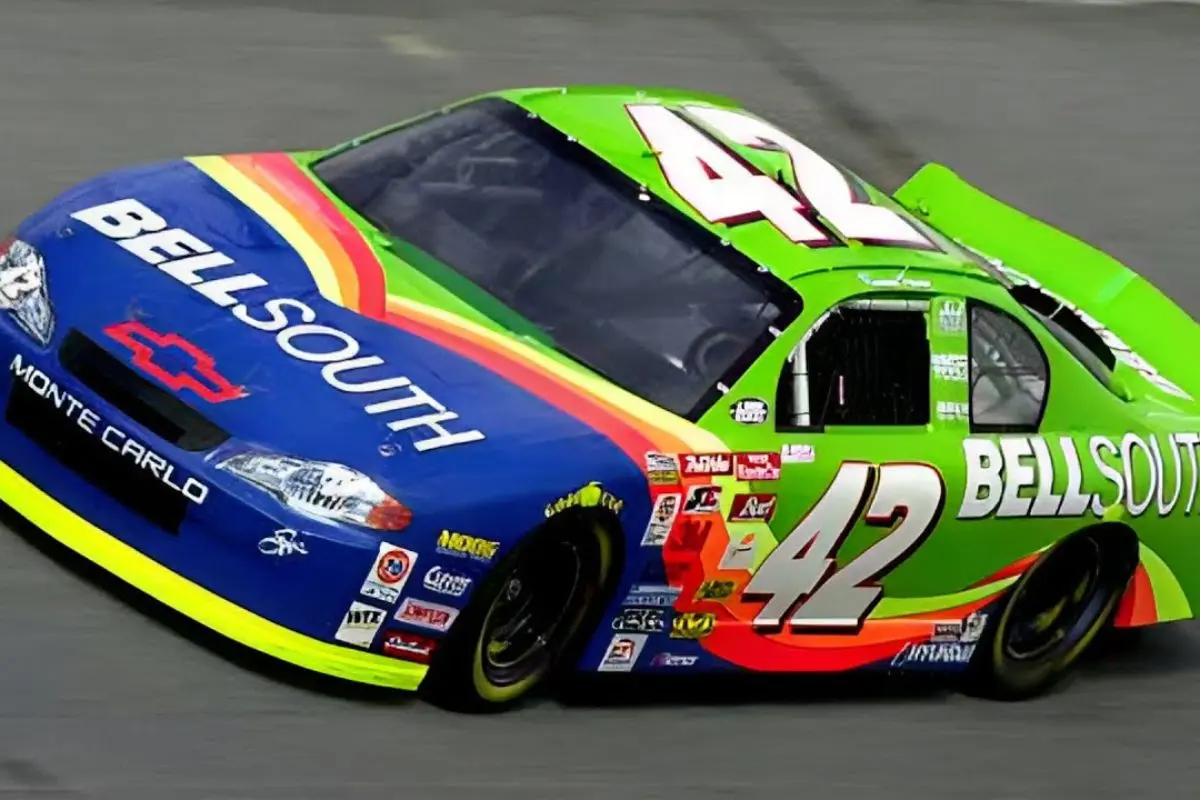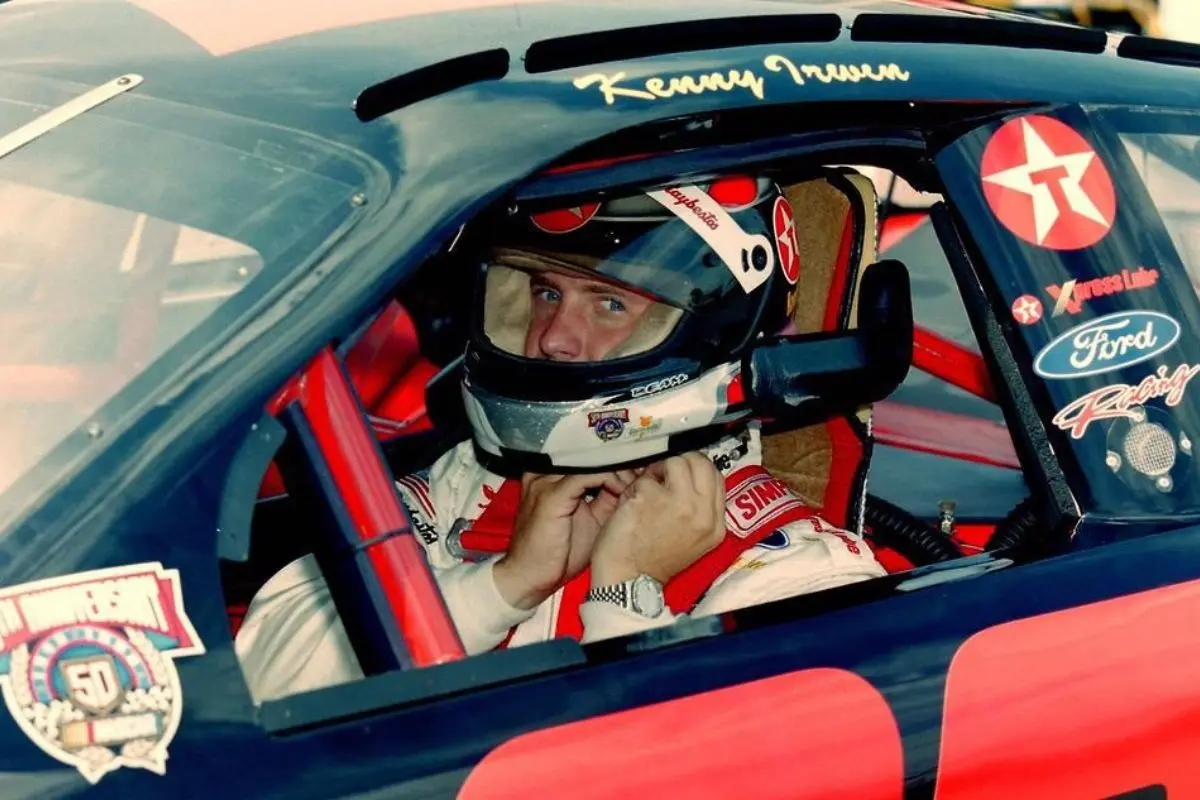Speedway That Took Two NASCAR Drivers’ Lives: New Hampshire Motor Speedway became a symbol of heartbreak after two fatal crashes within just two months. Rising stars Adam Petty and Kenny Irwin lost their lives on the same track in 2000, leaving fans and drivers questioning what went wrong. Was it mechanical failure, track design, or a tragic coincidence? These back-to-back losses shook NASCAR to its core, sparking debates about safety and the true dangers of high-speed racing.
Key Highlights
- Kenny Irwin’s tragic accident occurred during practice for the New England 300, where he lost control at 150 MPH and crashed into the wall.
- The collision resulted in fatal injuries, leading to a delayed announcement of his death by nearly four hours.
- Speculation about a stuck accelerator emerged, prompting NASCAR to investigate safety protocols and vehicle standards.
- The incident shocked the NASCAR community, sparking tributes and discussions on improving driver safety measures.
- Irwin’s legacy continues to influence safety initiatives and awareness of high-speed racing risks within the sport.
The Tragic Incident
The tragic incident at New Hampshire Motor Speedway marks a somber moment in NASCAR history, echoing the haunting memories of previous fatalities on the same track. Kenny Irwin, a promising driver and the 1998 Winston Cup Rookie of the Year, met his untimely demise during practice for the New England 300 when his car collided with the wall at a staggering speed of 150 mph.
Just eight weeks prior, Adam Petty had lost his life in a similar incident at almost the same site, raising alarm bells about safety protocols and mechanical integrity within the sport.
Irwin’s accident occurred as he entered the tertiary turn, where his vehicle veered uncontrollably and flipped onto its roof, resulting in multiple injuries that proved fatal. The delayed announcement of his death—nearly four hours after the crash—added to the shock reverberating through the NASCAR community.
Speculation swirled around the possibility of a stuck accelerator, a mechanical failure that could have impeded Irwin’s ability to decelerate sufficiently for the turn. This raised critical questions regarding the safety measures in place, particularly as similar circumstances were speculated in Petty’s earlier accident.
The dual tragedies at New Hampshire Motor Speedway underscore an urgent need for a thorough examination of vehicle safety standards and track conditions.

Driver and Track Perspectives
Amid the mourning for Kenny Irwin, perspectives from both drivers and track officials have emerged, shedding light on the complex interplay between human factors and track design that contribute to the dangers of high-speed racing.
Richard Petty, a revered figure in NASCAR, asserts that the tragic incidents are merely coincidental, emphasizing that the racetrack itself is not at fault. He suggests that the overwhelming forces experienced during sudden stops are beyond human control, a sentiment that speaks to the inherent risks of the sport.
“Those things are circumstances beyond human control, There ain’t nothing the matter with the racetrack.”
“It’s circumstances with the way you stop that thing so quick. Your body just can’t stand it.” – Richard Petty
Conversely, several drivers voiced concerns regarding the track’s design and condition. Rusty Wallace highlighted a specific bump at the end of the backstretch, where cars reach speeds of approximately 150 mph, indicating that while drivers brace for such challenges, the track’s surface—compounded by dirt and rubber buildup—renders it perilously slick.
Mark Martin further articulated the risks associated with sharp corners, suggesting that the design allows little room for error, particularly in scenarios involving stuck throttles.
“This race track and Martinsville are a particular danger to stuck throttles because the corners are so sharp, At a lot of the bigger race tracks with sweeping corners, you have a chance to do something about stuck throttles.” – Mark Martin
Ward Burton, visibly shaken after visiting Irwin, called for changes to the near-flat turns, advocating for higher banking to improve safety. His insistence that two fatalities at the same track signify a pressing issue emphasizes a broader call for examination and improvement in track design.
“Two’s a problem, I think it needs to be addressed.” – Ward Burton
Collectively, these perspectives depict a critical dialogue within NASCAR: balancing the excitement of high-speed racing with the imperative of driver safety, a challenge that remains as formidable as the sport itself.
Investigations and Responses
NASCAR’s ongoing investigations into Kenny Irwin’s tragic accident reflect the deep-seated complexities surrounding safety in high-speed racing. With the wreckage of Irwin’s once-sleek blue Chevrolet now a focal point for examination, officials are tasked with unraveling the sequence of events that led to this devastating incident.
Operations director Kevin Triplett emphasized the urgency of this investigation, acknowledging the criticisms aimed at the track, particularly regarding its banking. While he affirmed NASCAR’s commitment to evaluate all suggestions, he cautioned that it was premature to draw determinations about the accident’s cause.
“But it’s really too early to say what happened here.” – Kevin Triplett
This incident has reverberated through the NASCAR community, prompting introspection among drivers. Wallace’s reflections on the day encapsulate the emotional toll such tragedies impose, as he questioned the very motivations that drive individuals to race at breakneck speeds.
“These are the days that make you really sit back and look at yourself in the mirror and ask, ‘Why do I do this?”‘ – Wallace
The gravity of the situation is further highlighted by the withdrawal of Irwin’s car from competition and the hesitance of his teammate, Sterling Marlin, to make a qualifying attempt. The sentiments expressed by Irwin’s BellSouth Racing Team highlight the profound impact of the loss, with thoughts and prayers extended to both his family and teammates.
“Our thoughts and prayers are with Kenny’s family and his teammates.” – Sterling Marlin
The responses to this tragedy extend beyond immediate bereavement; they call into question the overarching safety protocols within the sport. As investigations unfold, the necessity for a thorough understanding of accident causation and track safety measures remains paramount, bearing implications for the future of NASCAR racing.

Irwin’s Career Highlights
Kenny Irwin’s voyage in the world of professional racing, marked by determination and resilience, showcases both his potential and the challenges he faced. An Indianapolis native, Irwin’s NASCAR career, though cut tragically short, was highlighted by notable achievements that reflect his drive and talent. While he ultimately faced setbacks, his early accomplishments laid a foundation for what could have been a remarkable path.
Irwin’s early success in the Craftsman Truck Series showcased his ability to compete at high levels, earning him honors that signaled his potential in the sport. Shifting to the Winston Cup Series, he won rookie honors, illustrating his adaptability and skill as he navigated the demanding landscape of NASCAR racing.
Despite the challenges he encountered, including being let go from Robert Yates Racing, where he struggled to find victory lane, Irwin remained a respected competitor within the NASCAR community. His legacy is one of perseverance, and he is remembered fondly by fans and fellow drivers alike.
Career Background and Petty Family Reaction
The tragic loss of Kenny Irwin sent shockwaves through the NASCAR community, prompting reflections on his career and the emotional toll on his peers. Irwin, who had recently joined Felix Sabates’ Team SABCO, was carving out a promising path in a sport notorious for its perilous nature. His tenure in the Winston Cup Series was marked by both challenge and potential, as he sought to establish himself among the elite.
Despite his struggles, Irwin’s statistics reveal glimpses of his talent:
- Consistently improved performance, finishing 10th at Loudon in the fall.
- A notable move to replace Joe Nemechek, who had achieved considerable success at New Hampshire.
- Positioned 28th in points with a top-five finish—an indication of his expanding potential.
- A career that, while cut short, illustrated resilience and determination.
The emotional reaction from the Petty family highlights the profound impact of Irwin’s untimely death. Richard Petty was present at the track, yet his son Kyle opted to stay away, citing the emotional weight of returning to a location that had witnessed tragedy before.
Jeff Dennison, a spokesman for Petty Enterprises, encapsulated this sentiment, stating, “He just didn’t feel comfortable.”
This reaction speaks volumes about the psychological scars that linger in motorsport, where the thrill of competition coexists with an ever-present danger. Irwin’s legacy is one of promise and loss, forever etched in the annals of NASCAR history.
News in Brief: Speedway That Took Two NASCAR Drivers’ Lives
The tragic incident involving the NASCAR driver highlighted the inherent dangers of high-speed racing and its profound emotional impact on the sport. Responses from fellow drivers and the racing community emphasized a collective grief and a renewed focus on safety measures.
The legacy of the driver, marked by notable career achievements, continues to resonate within the sport. Ultimately, the event serves as a poignant reminder of the fine line between exhilarating competition and the harsh realities of risk in motorsports.
ALSO READ: How Stephen Rhodes Became NASCAR’s First Openly Gay Driver?

